Some of the links in this post may be affiliate links.
Is your orchid dying and you’re not sure what to do? Not sure how to revive an orchid and make it beautiful again? I’ve compiled this critical list of the most common problems that people have with moth orchids, or Phalaenopsis. And most importantly, I’ll describe exactly what you can do to fix these orchid problems!
And there are many problems in orchid care! Proper consistent care is necessary to have thriving orchids.
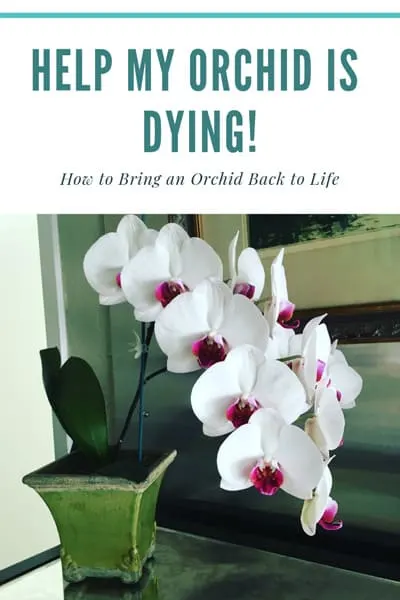
I’d like to first go through a detailed list of troubleshooting. But then at the end of the post, I will describe exactly what proper orchid care looks like.
It is definitely easily achievable to grow and rebloom an orchid! Just stick with me! I’ve turned many orchid killers into orchid growers!
Allow me to take you through the top issues that people have with orchids. People have approached me over and over again with the same problems, so my goal is to help you overcome these orchid problems!
So let’s get into how to save an orchid from dying!
Table of Contents
Orchid Not Flowering
Solution #1: Give Your Orchid More Light
This is one of the most common orchid problems that people have come to me with, and I’ve been able to help everyone with my advice.
The most common reason why your orchid is failing to bloom is not enough light!
One tell tale sign of an orchid that is not getting enough light is that the leaves may be a very dark green. In most cases in the home, orchids should be grown right in front of a window.
The only exception that I can think of is it you have a lot of light coming in from skylights. It is OK though to put your orchid on display temporarily while it is in full bloom. It will do no harm and I do this all the time.
Just be sure to return your plant to its window after the blooms are gone!
I keep almost all my orchids right in front of an Eastern facing window. They receive bright indirect light for most of the day, and some morning sun. The morning sun is gentle enough on Phalaenopsis orchids.
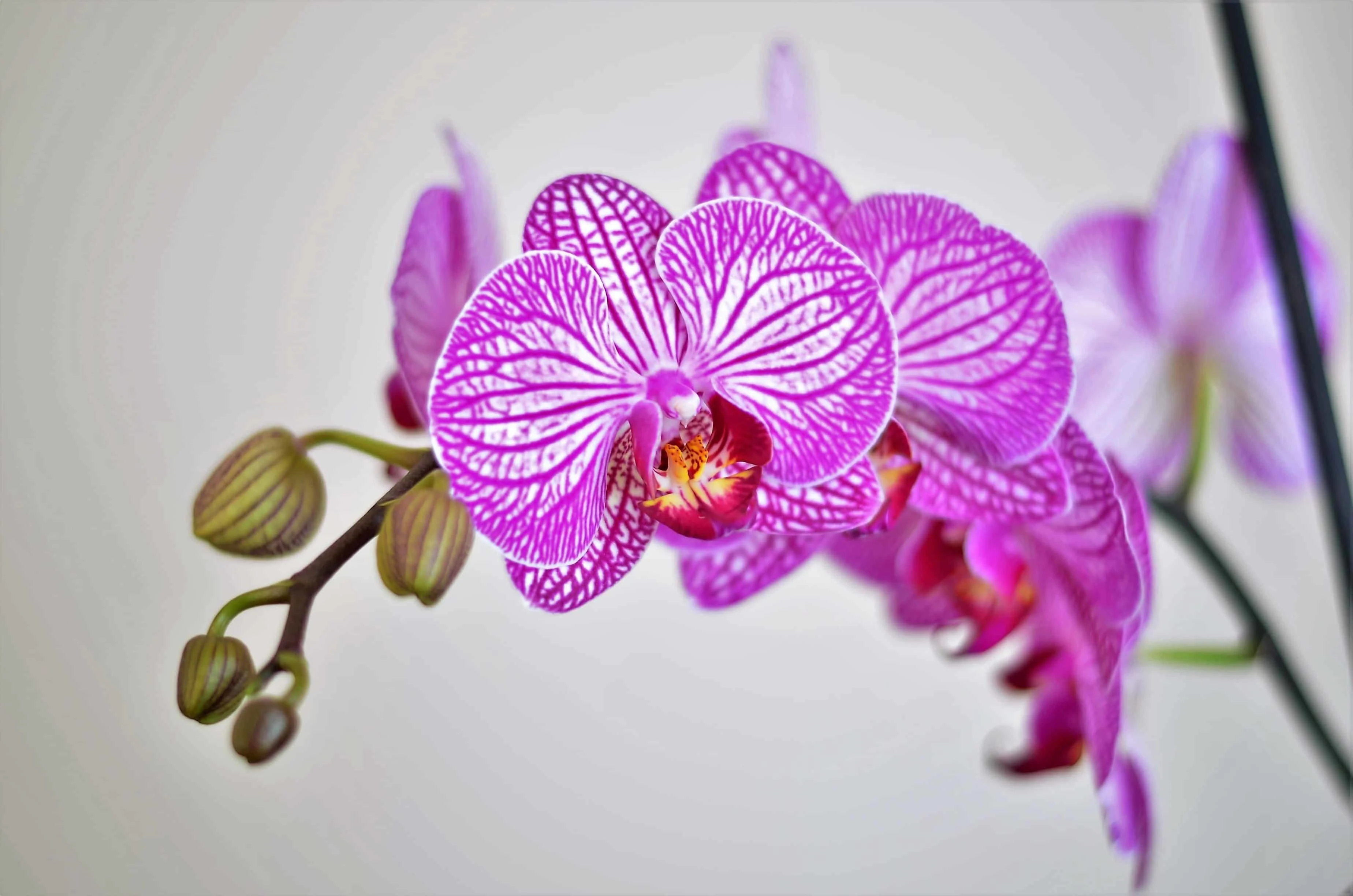
On the other end of the spectrum, you do not want your Phalaenopsis, or moth orchid, to bake in sun all day.
Solution #2: Vary the Daytime vs. Nighttime Temperature
If your plant looks perfectly healthy and you are giving it enough light, but just refuses to bloom, one thing you can try is to have a drop in temperature at night.
This is most easily achieved if you can place your Phalaenopsis outdoors for the summer.
Summering your orchids outdoors will do wonders for them! Often times, a 10-15F, or more, drop in temperature at night time will be enough to cause your orchid to bloom for you.
Many moth orchids will grow a flower spike in the Fall or early winter. Of course, this depends on the parentage of the particular hybrid that you have.
Just be sure to bring your orchid back indoors before the night time temperatures go below approximately 55F.
If you don’t have access to an outdoor space, you can even place your orchid pot very near to a window. I did this once successfully. I had a moth orchid that would not bloom, and I brought it to the basement.
I touched the orchid pot to the window (being careful not to have any leaves touch the window). This provided enough of a temperature drop in the evening time to trigger the plant to bloom.
For more details, be sure to read my article on why your orchids aren’t flowering.
Orchid Flowers Falling Off
Solution #1: There May Not Be Anything Wrong To Begin With!
I’ve had many people approach me in the past telling me that their orchid is dying.
Being the plant doctor that I am, I then proceeded to ask them a few questions to get down to the bottom of it. Many have told me that they purchased their orchid and brought it home and have had it for 2 or 3 months.
Then the orchid flowers start drying up.
My response is usually “if you want a flower that lasts forever, buy a silk plant!” Well ok, that’s not what I tell people. But seriously, what more can you want?
First of all, when you purchase an orchid at the store, you simply don’t know how long the orchid flowers have been open.
And if your plant was basically in full bloom when you purchased it, and the flowers last an additional 2-3 months back at home, there is nothing wrong!
It’s just part of the natural cycle of your plant! No flower will last forever so don’t have unrealistic expectations of your plant. When I buy orchids, I like to buy ones that have some unopened buds at the tip.
This will ensure that you’ll get a longer show once you bring them home.
So next time you see droopy orchid flowers, this may be one of the main causes.
Solution #2: Protect Your Orchid From Extremes in Temperature Anytime You Are Moving It
For those of us that live in colder climates, we have to take our orchid out of the nursery or grocery store and into the cold weather outside to get to our cars.
Don’t be surprised if some bud blasting occurs on your orchid. In fact, you should pretty much expect it! Bud blasting is basically when an unopened flower bud just dries up on you and doesn’t open.
One of the factors that causes bud blasting in orchids is sudden changes in temperature. The mere fact of walking 1 minute to your car in very cold weather, even if you cover the plant with a bag, will be enough to have one or two buds experience bud blasting.
Really there is nothing that you can do about it! Other than permanently move to a warm climate! One day I hope to retire outside of Ohio and have warmth year-round…
Bud blasting can also be caused by sudden changes in light or watering. Inconsistent watering habits, especially while an orchid is in bud, could also cause bud blasting.
So if you experience bud blasting shortly after you purchase your orchid, remember that you orchid needs to adjust to your home conditions. Plants need a period of adjustment.
Moving a plant from the ideal greenhouse conditions into average home conditions can be a bit of a shock for your orchid. It won’t kill it (orchids are much tougher than people think), but realize that it will need some time to adjust.
I almost forgot…keep your orchids away from heating vents! You don’t want hot, dry air blowing at your orchid especially when it is in bud. This can also cause bud blasting.
For more detailed information, be sure not to miss my blog post dedicated to the causes of orchid bud blast and how you can prevent it from happening.
Why Are My Orchid Leaves Getting Wrinkled?
Solution: Fix Your Watering Issues
If your orchid has wrinkled leaves, it could be due to either underwatering or “overwatering” but you would need to determine which one.
Moth orchids don’t have pseuobulbs like many other types of orchids, so they must never dry out completely, especially for extended periods.
Pseudobulbs are water and food storage organ found in many other types of orchids, like Cattleya. Moth orchids don’t have these.
If you let your moth orchid get too dry, the leaves will get more and more wrinkled. Put your finger into the potting medium. Is it bone dry? Are the roots also dry and wrinkled? This indicates that you need to step up your watering game.
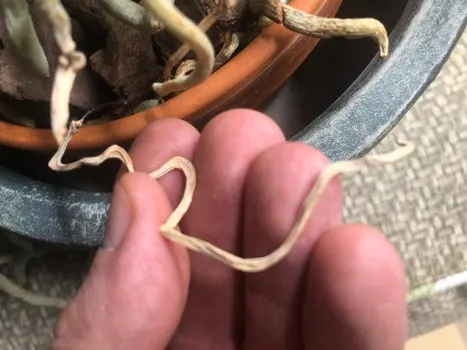
For an orchid that is very dehydrated, you should thoroughly soak the entire pot.
Set it inside of a bucket of water or sink, or even back inside its decorative pot. Let it soak in water for even a few hours for a severely dehydrated plant.
This is only for extreme cases until the plant recovers. You can do your regular watering this way too, but 15-30 minutes would be sufficient. After that, drain out all the excess water.
Orchid must never sit in water for extended periods of time unless you are treating them for dehydration.
On the other hand, if you have wrinkled leaves and the roots are mushy or rotted out, then the issue is probably due to root rot. Don’t make the mistake of adding extra water in this case in response to the wrinkled leaves!
Another indication of root rot is if you grab a root and you are able to pull the outer portion of the root away to reveal a “string” in the middle.
In the case of root rot, depending on how bad it is, you should immediately take your orchid out of its pot and remove all the potting medium and repot it in fresh medium.
If you see signs of new roots growing, you may be in luck. If you have no roots left on your orchid and the leaves are very wrinkled, it might just be time to toss the plant.
For more details, be sure not to miss my blog post describing how to fix droopy orchid leaves.
Orchid Air Roots All Over the Place
Solution: Leave Them!
Phalaenopsis, or moth orchids, like any epiphytic orchids, grow an abundance of air roots. In nature they use the roots to attach onto trees, absorb water and photosynthesize.
So leave them! There is nothing wrong and it is perfectly natural for this to occur. It doesn’t necessarily mean that it is time to repot, although you should repot your orchid every 2-3 years. To see how to repot an orchid, check out my blog post on repotting orchids.
Shriveled and Dry Orchid Roots
Solution: Water Them!
Do your orchid roots appear to be nice and plump and healthy underneath the potting medium, but the exposed air roots are shriveled up and dry?
The most probably explanation is that you are simply not watering the air roots! When you water your plants, be sure to also moisten the exposed air roots otherwise they will shrivel up and completely dry up.
Healthy orchid roots should be round, plump and a silvery color. When you get them wet, they should turn a greenish color.
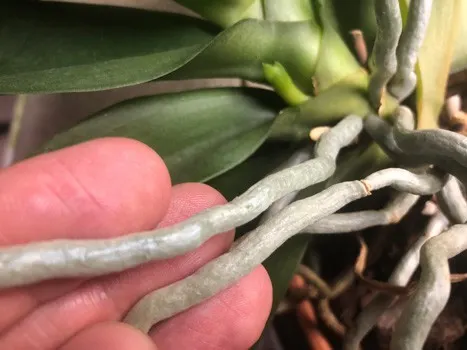
What is the White Fuzzy Stuff on My Orchid?
Probably mealybugs! Although mealy bugs reproduce pretty quickly, they aren’t typically too difficult to control on orchids.
Seeing white cottony masses on the leaves probably means you have mealybugs. Another indication of mealy bugs on orchids is that you may find sticky spots on the leaves. This is because mealybugs will excrete what is called honeydew, and it is sticky.
Solution: Wipe Off the Mealy Bugs and Use Rubbing Alcohol
According to the American Orchid Society, an effective way to eradicate mealy bugs, scale and even aphids, is to use rubbing alcohol.
First, remove all the visible masses of the pests with your finger or a small cloth or paper towel.
Then, take a cotton ball or paper towel, dip it into isopropyl alcohol (rubbing alcohol) and gently wipe the affected areas. The commonly available isopropyl rubbing alcohol at 70% concentration will work fine.
Do NOT use other types of alcohol, or higher concentrations, because you might damage your plant. You may want to test one small affected area first and make sure that your plant doesn’t have a negative reaction.
Keep repeating the treatments until there is no indication of pests left. Check out my post on treating mealybugs for more details.
Orchid Leaves Turning Yellow
Solution #1: There May Be Nothing Wrong!
If only one bottom leaf has turned yellow, but all the rest of the leaves look great and the roots are healthy and vigorous, there is probably nothing wrong with your orchid!
It is perfectly normal for plants to eventually have their lower leaves turn yellow. It’s just part of the growth process.
If your plant is losing more leaves than it is growing, then you may need to adjust your watering.
Solution #2: Adjust Your Watering
Yellow leaves, like the issue with wrinkled leaves, can also be cause by both underwatering and overwatering! Go back up to the “Why Are My Orchid Leaves Getting Wrinkled” section to see what you should be looking for.
Proper Orchid Care
So as you can see, there are so many factors to get right in orchid care. Orchid care is actually very easy once you understand a few things and realize that orchids are not hard.
They’re just different! And you just have to get used to the care. After you do, you will find them to be very easy!
If you want to learn all about how to get your orchid to rebloom reliably and have healthy, thriving moth orchid plants, don’t miss my signature, online orchid care course, Become an Orchid Master. It also includes bonuses with support from me, personally, to guide you in your orchid journey!
“Not only do I have a black thumb but I travel frequently and have a cat. I didn’t think it was possible to grow anything in my house. Raffaele helped me to understand that orchids are not intimidating. In fact, they are quite robust and require very little attention. I would highly recommend his advice and this book. If I can get an orchid to re-bloom you can too!”
-Meredith in Cleveland, Ohio
“I check your posts every day, and they’ve helped me create a year long plant oasis inside my home. Your moth orchid book saved my orchids, and I’ve loved sharing the things I’ve learned from you with my friends.”
-Shelby in London, Ontario
“I have never been able to rebloom an orchid by simply following the tag on my store purchased orchids. A friend recommended Raffaele, and I immediately began scanning his blog for info on orchids. I now realize why my orchids were not reblooming. I ditched the ice cube watering system that is somehow still all over the web and began following Raffaele’s instructions. Within weeks, I had a new flower spike! My plants are thriving, and I am a happy camper. Thank you, Ohio Tropics!
-Jackie in Winchester, Virginia
Have you experienced any of these orchid problems? Or maybe something not discussed in this post? Comment below!

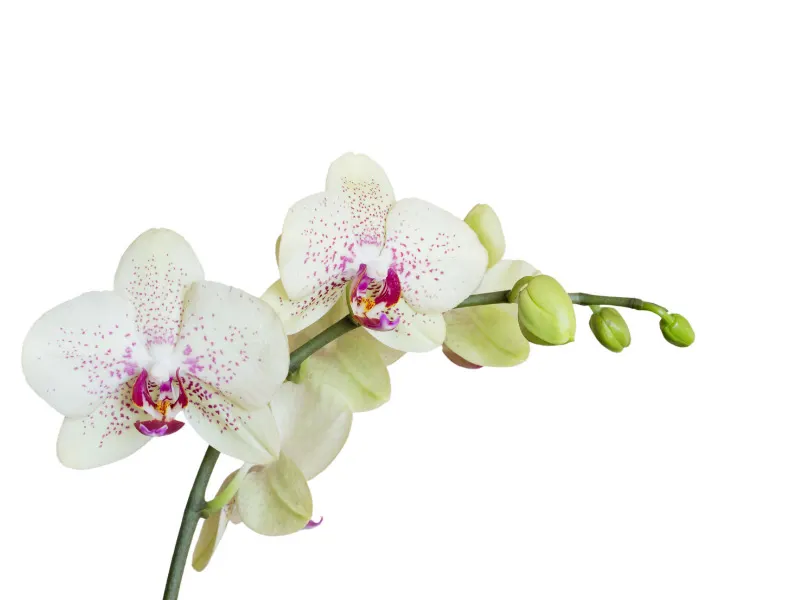
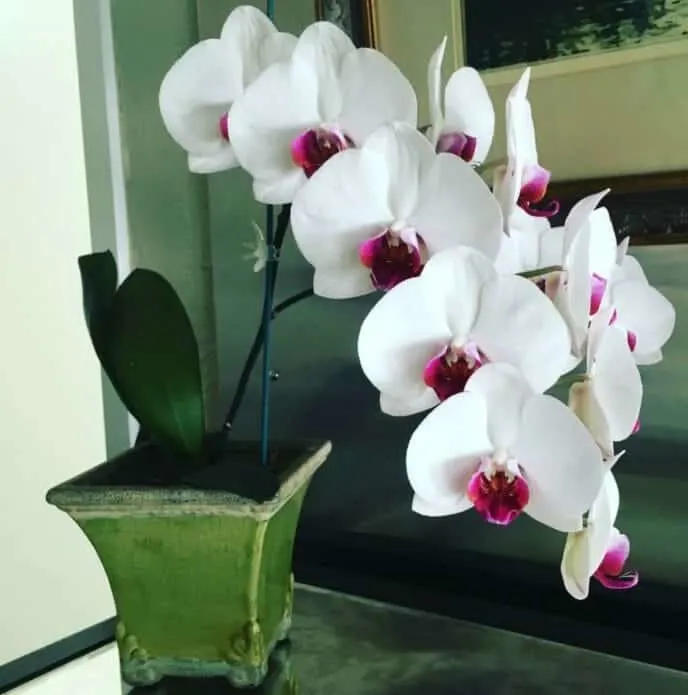
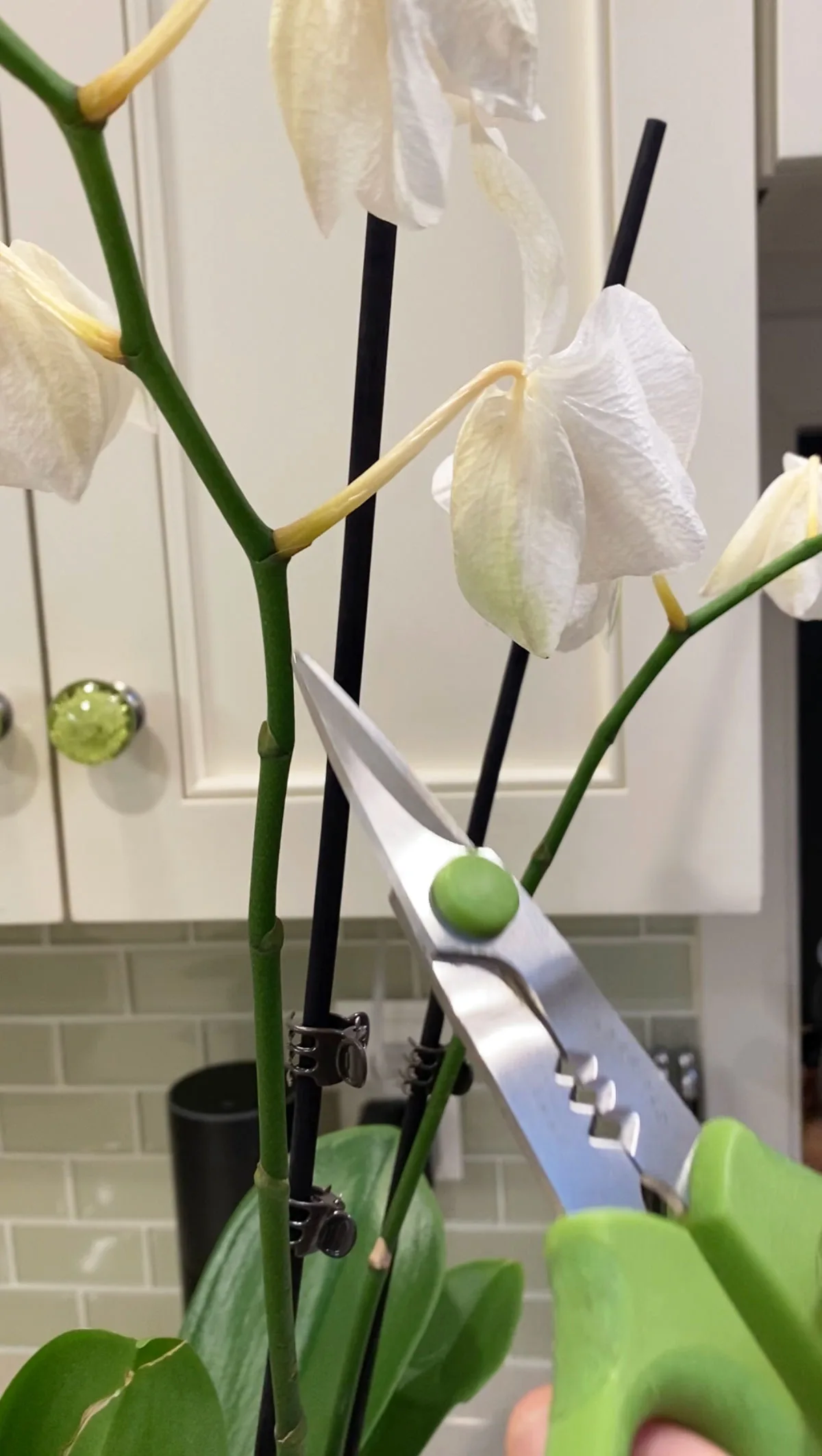
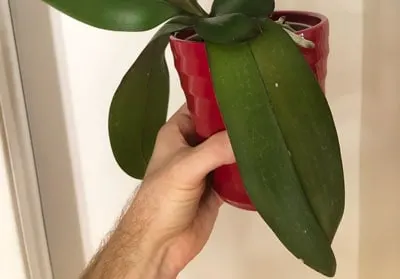

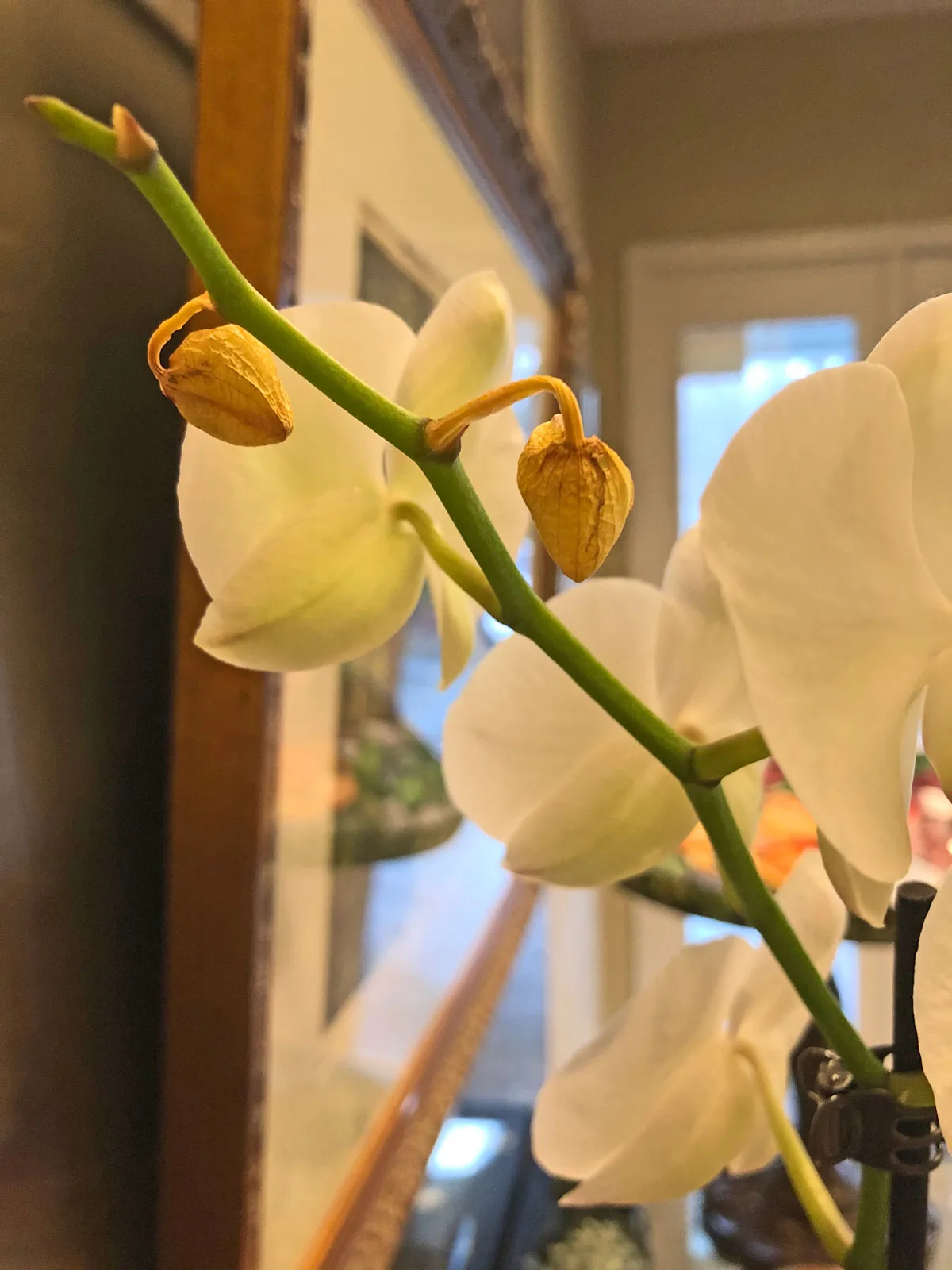
Diane Knight
Saturday 24th of June 2023
I guess I would like to brag. I received my very first orchid from my grandson and girlfriend July 7th 2020. I have had lots of blooms on it. I have had a many as 9 blooms on my orchid at one time . I watered once a week from the bottom. I also used distilled water and put dried ground banana peels in the water. It did wonderful. I cut the one stem off and it bloomed again. I still have the plant but I think it is coming to an end. It will be 3 years in July. I have enjoyed having it. By the way you had some very good suggestions. A very informative sight. Thanks !
Raffaele
Sunday 25th of June 2023
Glad you enjoy my site Diane! And congrats on your success :-)
Maryanne
Friday 7th of April 2023
Phal orchid . petals of blooms are wilting. The plant only has 2 leaves ( one has split in half) the roots are brownish and flat - the moss is moist from last watering about 5 days ago. Have outside north facing in covered lanai. Was brought out from inside a few weeks ago as we were out of town for a couple of weeks. Was watered once in my absence by a relative. This is a small orchid in a 4” pot. I’ve had for about a month. Hubby bought for me. Only had 2 leaves. Not one I would have bought with so few leaves. Your thoughts please
Raffaele
Thursday 13th of April 2023
Are the roots dry and wrinkled when you touch them? If so, they've dried out too much. I'd have to see some photos in order to better help. Can you tell me about your watering practices?
Jayne
Sunday 12th of March 2023
My phalaenopsis orchid has droopy leaves that have black areas on the underside and some edges have small black/tan colored indentations. It has two small blooms right now. It is in spagnum moss. What am I doing wrong?
Raffaele
Monday 13th of March 2023
Hi Jayne, I would need more details about your care routine to help (light, watering, etc). It sounds like it might be rotting potentially. Does the moss tend to stay wet for a long time?
Crystal Dowless
Thursday 15th of September 2022
Hi, one of ny orchid stems is dying but there’s a perfectly healthy air root with leaves growing from the dying stem. What do I do to save the aerial roots with leaves?
Raffaele
Friday 16th of September 2022
Since the flower stem is dying, you can cut off the baby orchid plant (called a keiki) and pot it up.
Joyce
Saturday 30th of July 2022
I received an orchid for my birthday last year, I managed to keep it alive, it re-bloomed, I was happy. I'm worried about it now, one of the stems dried up, the roots have black spots on it, I've been watering it with 3 ice cubes as recommended, then I found out that is bad for it. I don't know what to do now, I lifted up the clear plastic pot, was surprised to see standing water, when I haven't watered it in over a week. Help, please advise.
Raffaele
Saturday 30th of July 2022
Hi Joyce! I would definitely stop using ice to water it, and I would also go ahead and repot it. Cut off any mushy/dead roots and use fresh mix. Since it sounds like the roots have been sitting in water, you probably have some that are rotted out. I have plenty of blog posts on my site about orchid care, including one on repotting. Check it out and good luck!